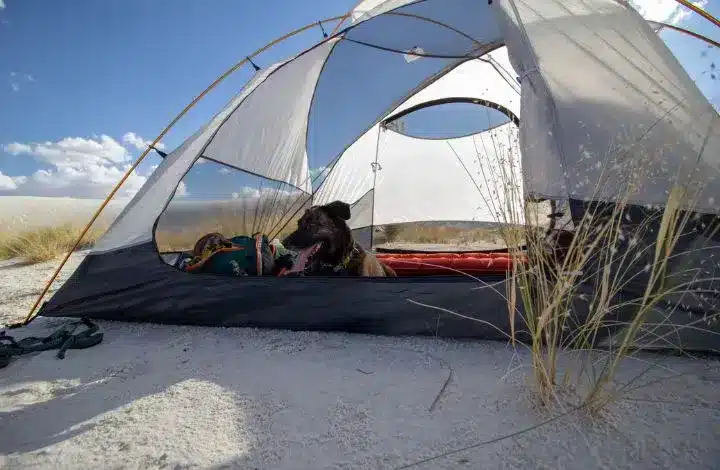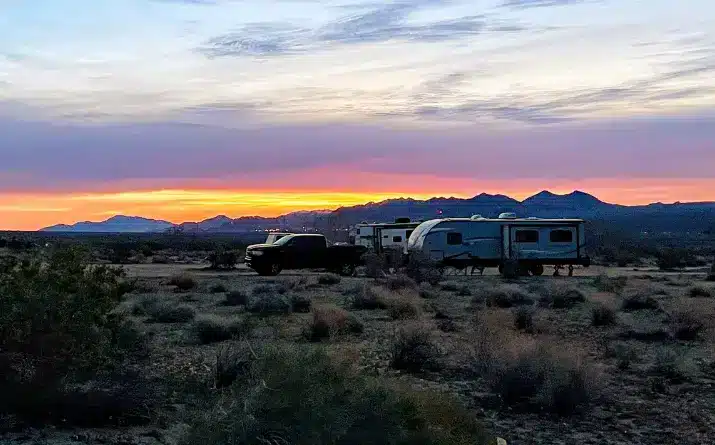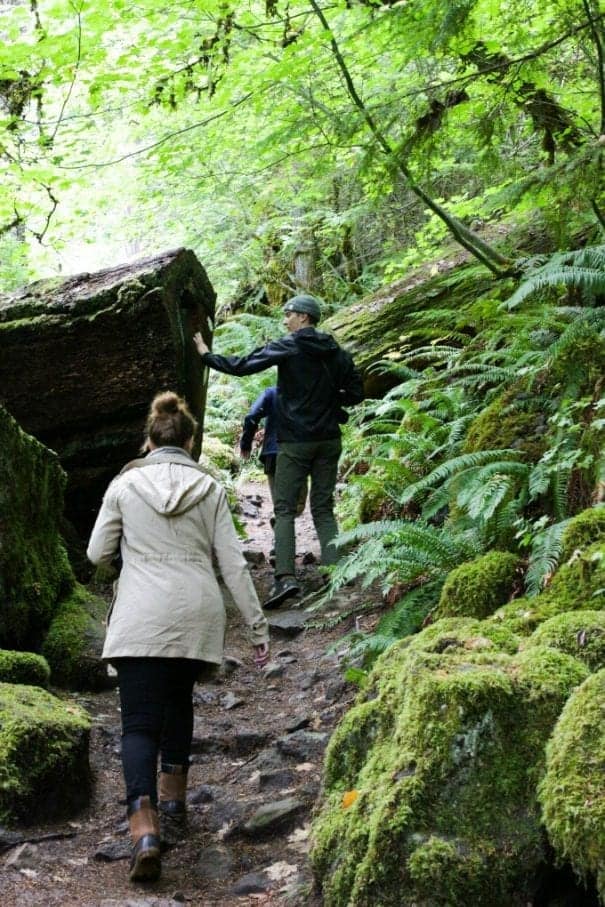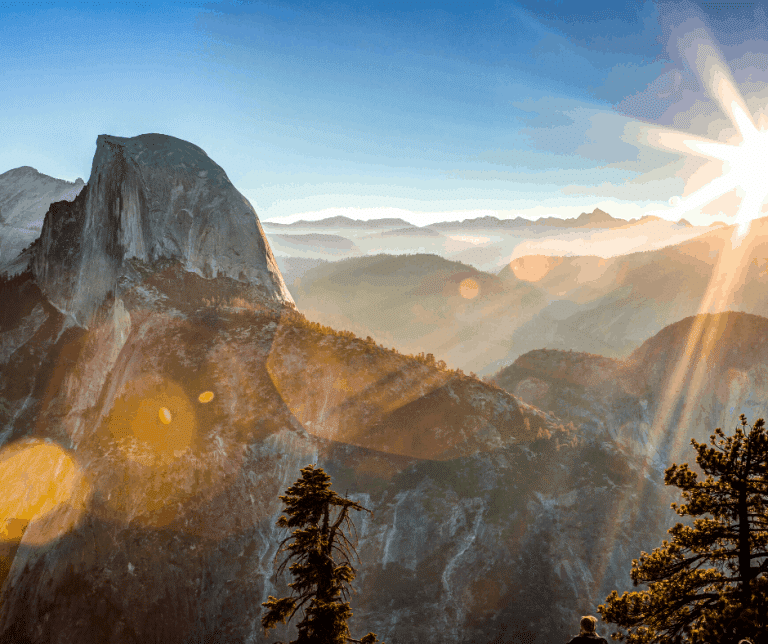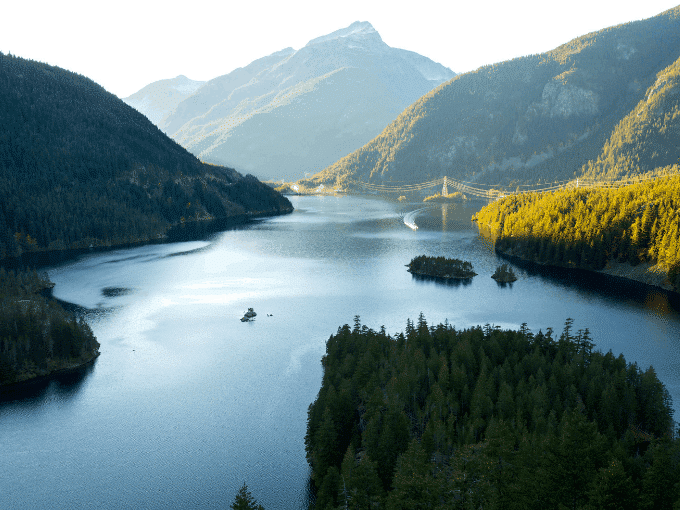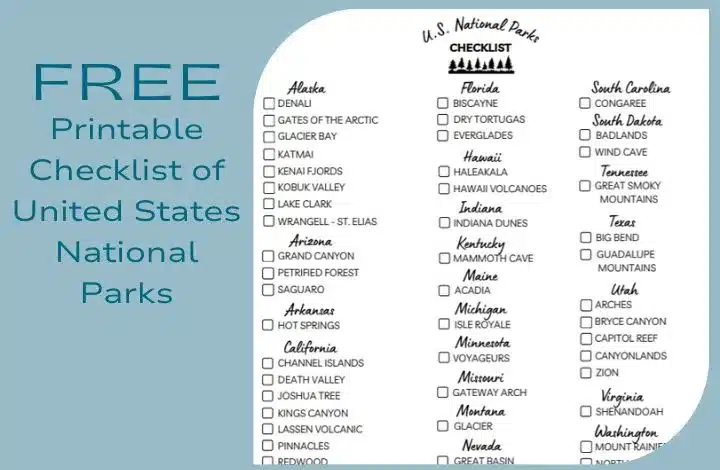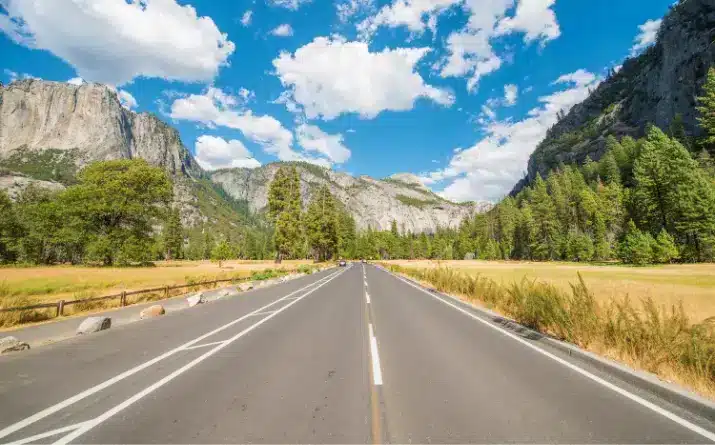Ultimate Guide for Visiting White Sands National Park
Right outside of Las Cruces, New Mexico, you’ll find one of the world’s great natural wonders inside the Tularosa Basin. What was once White Sands National Monument is now White Sands National Park.
It’s one of my favorite places that I visit every year. I’ve yet to find a place quite like this in all of my travels, so I’d like to share with you all of the things I love about it and what you can do once you get there. Read on for the ultimate guide to White Sands National Park.
What to Know Before You Visit White Sands National Park
Best Time of Year to Visit White Sands
The best times of year to visit White Sands are during the Fall, Winter, and Spring months. Visiting during the day is much more enjoyable during these months than spending your time there sweltering in the summer.
If you do visit during the summer, I would suggest going early in the morning or later in the evening to avoid the heat.
White Sands Park Entrance Fees
Like all national parks, White Sands requires a fee at the entrance in order to visit. At the time of writing, the park entrance fee is $25 per vehicle to enter the park. If you have an America The Beautiful Pass (only $80 for the whole year!), you can enter the park for free.
DISCOUNTED PASSES
Seniors (age 62+) can access the park for a lifetime cost of $80 or $20 for an annual pass. Current service members and veterans can access the park for free with a Military Pass which can be ordered online prior to visiting the park.
PARKING
One important item to know is that available parking is limited. This is especially true for larger RVs and travel trailers. We recommend you arrive as early in the day as possible to secure a parking spot.
Overflow parking may be available for larger vehicles in the parking lot near the White Sands Administrative Building.
Parking on Side of Road is Prohibited
While it’s tempting to pull over to the side of the road and get out to take a perfect picture of the sand dune field, it’s not allowed. Please use the parking lots, picnic areas, or trailheads for visitor parking.
Prepare for All Weather
Because White Sands is located in a basin surrounded by mountains, the weather can change quickly. During the day, you may experience up to 100 degrees or more, while at night you might experience 30 degree weather.
When I camped at White Sands (back when it was a national monument), it was 98 degrees during the day and 40 degrees at night. Talk about whiplash!
Always be sure to pack lots of water and snacks when you visit to make sure you stay hydrated and safe while out adventuring in the dunes.
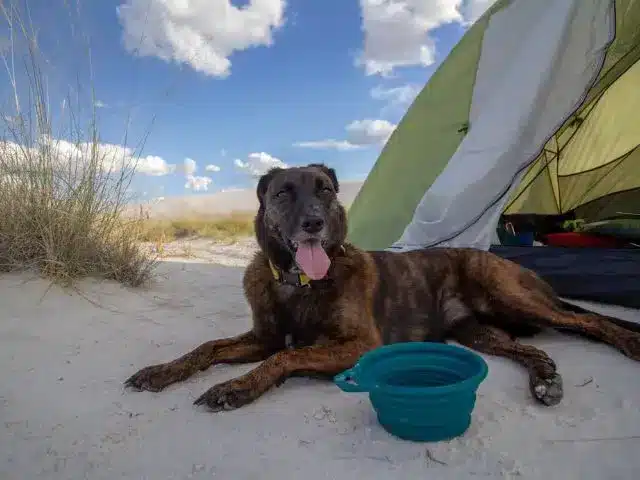
White Sands is Dog Friendly
If you’re anything like me, you probably struggle to take your dogs to national parks when you travel. Thankfully, White Sands is extremely dog-friendly!
As long as your dog is on a leash and you pick up after them, you can experience the dunes together.
All that said, note that pets are not allowed inside of the White Sands Visitor Center and they must be accompanied at all times.
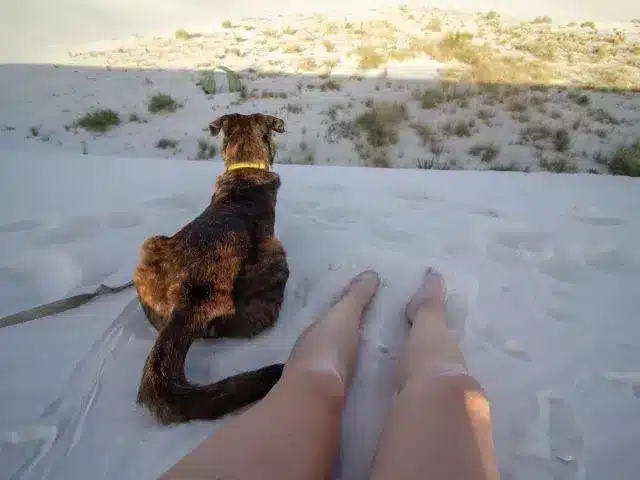
Park Closures for Missile Testing
Like all national parks, White Sands has its own rules and guidelines. Because the park is so close to missile testing sites, the highway leading to the park may occasionally shut down for hours or the entire day depending on missile testing.
All activities, including horseback riding, hiking, and sledding, are closed during missile testing. The visitor center and gift shop, however, remain open during the tests. Usually, the park knows ahead of time and will post testing times online so you can plan ahead.
It’s also important to be aware when you’re hiking in the dunes, especially if you hike further out, that you may find debris from missile tests.
For your safety, never touch or move anything that you think could be from a missile or explosive device. Ensure small children are supervised at all times. If you find something, always remove yourself from the area safely and return to the Visitors Center to notify a park ranger.
Things to Do at White Sands National Park
You might think that a national park located in a remote area that’s not often traveled through wouldn’t have much to do. But, this park actually has so much to offer.
From full moon hikes, sunset strolls with park rangers, to picnicking and sand sledding, there are plenty of things to do at White Sands to keep you busy during your visit.

Ranger-Led Programs
Throughout the year, White Sands National Park Rangers lead hikes around the park. Full moon hikes, sunset strolls, and Lake Lucero tours are available depending on the time of month and year.
The park also hosts special events like Full Moon Nights where local musicians and artists perform under the moonlight in the park.
Sand Sledding
If you’re traveling with kids or just want to have a little fun, sand sledding is a popular activity at White Sands. You can rent sleds from the Visitors Center before you head out to check out the dunes.
Park rangers suggest sledding near the Alkali Flat Trailhead or at the Roadrunner Picnic Area to avoid sledding into the roads leading to the dunes.
The Interdune Boardwalk is the only area where sledding is prohibited at White Sands.
Hiking & Mountain Biking
HIKING AT WHITE SANDS
For those of us who love to do anything outside, White Sands is the perfect place to hike and mountain bike!
As far as hiking goes, you can choose from a number of different short hikes. Or, set out in the early morning and hike as far as the eyes can see. Always mind the warning posts and do not t cross into missile testing areas.
BICYCLING AT WHITE SANDS
If you want to mountain bike, be sure that you’re only biking on roads and compact gypsum. Cycling on the dunes themselves is prohibited. Helmets are required for minors.
If you cycle into the park, you still need to pay the entrance fee.
Backcountry Camping in White Sands National Park
Backcountry camping in the Tularosa Basin is an experience unlike any other. Sadly, due to overuse, the campsites are closed until further notice as they work on rehabilitating the camping areas to their natural state.
If you’d like to camp at White Sands, keep a close eye on updates from the National Park Service for when camping opens back up.
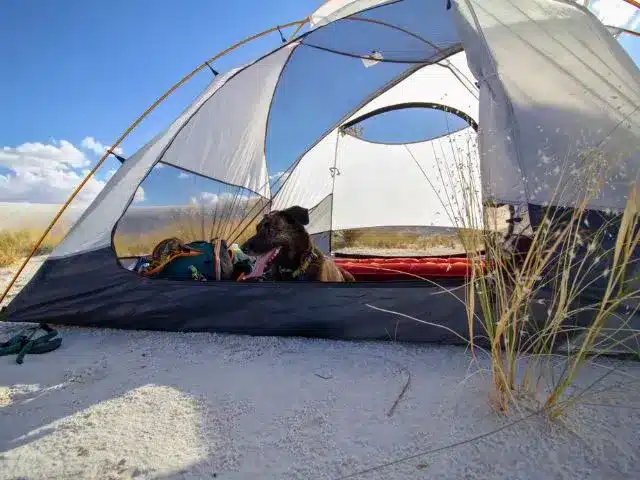
My Favorite Things About White Sands National Park
Finding Solitude
I continue to come back to White Sands every year because it’s one of the best places to find solitude in our busy world. The sunsets and sunrises here are unbelievable. If you have the time, make sure to plan a sunset stroll around the area. It’s quite breathtaking.
The white sand dunes are also one of my favorite places to take photos. The beauty of this place will astound you, especially if you’re planning for your first visit.
Adventure
A few other things I love about this place include the limitless possibility for adventure, any time of year.
The dunes go on for miles and miles and the sand won’t burn you, no matter when you visit. The gypsum sand keeps the dunes from getting hot, even in the summer months. That makes exploring this area doable as long as you bring plenty of water!
And last but not least, I travel with dogs 99% of the time. This is always a stop I make when traveling through New Mexico because I can let the dogs run wild (with a leash on, of course!) and experience one of the most beautiful national parks together.
Don’t forget the water bottle for your dog! A collapsible bowl is a good idea because it’s easy to pack into your day sack. As you can tell from the picture below, this is a great place for dogs to have so much fun then relax in the setting sun.
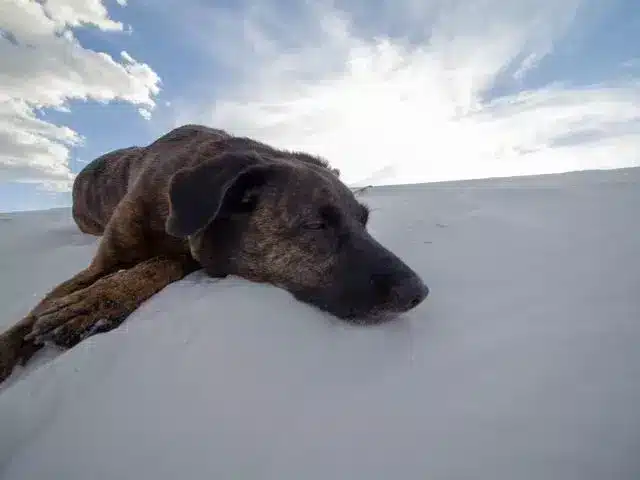
If you’re considering visiting White Sands National Park, all I can say is…don’t wait any longer! Plan your road trip as soon as possible because this place is a must-see!
What to Know Before You Leave White Sands
For more information on the regulations, browse the official National Park Service site for White Sands National Park.
Related Reading
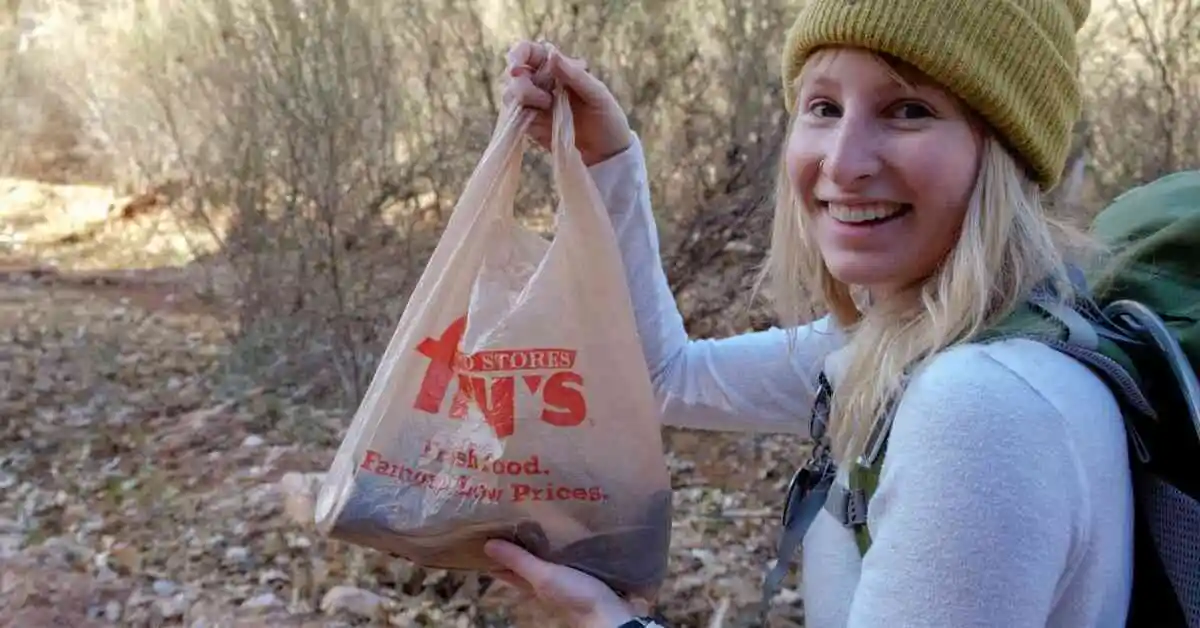
Erin is rooted in South Dakota, but wanders every chance she gets to see the beauty that nature holds. From hiking to climbing, there’s not an adventure she’ll turn down. After renovating her 1976 Airstream Argosy, Erin knows the ins and outs of living life on the road and trailer maintenance. Whether she’s on the road with her dog and partner or at home curled up with a good book, Erin is always planning her next adventure because life is meant to be lived outdoors.


